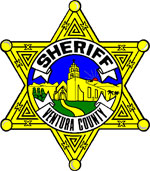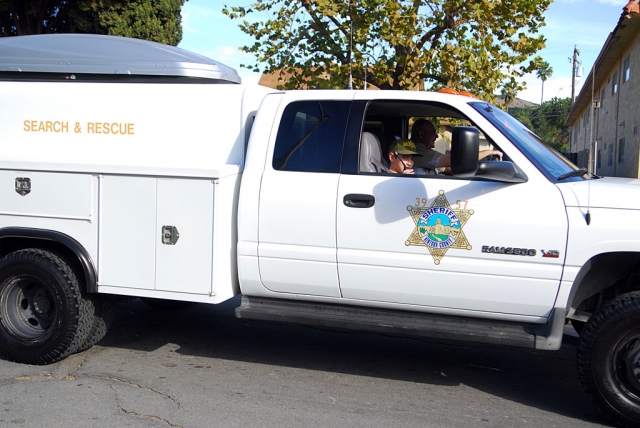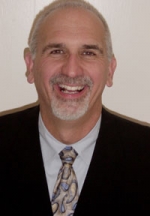|
By Anonymous — Wednesday, December 17th, 2008
At approximately 11:01 PM, Ventura County Sheriff’s patrol deputies responded to a report of robbery at the Shell Gas Station. A Hispanic Male, 5’9” to 6’, 150-170lbs, Slender build, Brown eyes, 20-29 year old suspect wearing a hooded sweatshirt, knit cap with his face covered by a bandana brandished a rifle at the 38-year-old female store attendant and demanded money. The clerk gave him the money in the cash register and watched the suspect flee toward the west and north. A second witness saw the suspect leave the store carrying a rifle and also called authorities. Anyone with additional information about this crime is urged to call Crime Stoppers at (805) 494-TALK (Thousand Oaks / Moorpark), (805) 385-TALK (Camarillo / Oxnard / Port Hueneme), Fillmore Police Department at (805) 524-2233 or the Ventura County Sheriff’s Department Major Crimes Unit at (805) 477-7000. |
 Fillmore’s new skateboard park is expected to be open for business December 22. The long-awaited facility was promised to our youth nearly 7 years ago. Designed by professional skateboard experts, it has areas for beginners, more experienced, and expert skateboarders. Drainage will soon be hooked up to the city storm system and will keep the bowls free from water accumulation. This million-dollar park, urged-on by former Mayor and serving Councilman Steve Conaway, will be the best of its kind in Ventura County. Enlarge Photo By Anonymous — Wednesday, December 17th, 2008
 Crews were out last week watering down the newly-poured concrete skateboard bowl; this week Mother Nature is taking care of it for us. The skateboard park is expected to open December 22nd. Merry Christmas Skaters! Enlarge Photo |
|
By Anonymous — Wednesday, December 17th, 2008
 And they had several toys dropped off as well! The toys will be distributed to the North Fillmore Storefront, and be handed out on Monday, December 22rd. Enlarge Photo |
 John Garnica was sworn in as the new Fillmore Unified School Board President, by superintendent Jeff Sweeney, at Tuesday night’s school board meeting. Enlarge Photo By Mariandrea Mueller — Wednesday, December 17th, 2008
 Pictured (l-r) Mountain View Principal Chrissy Schieferle, school board member David Dollar and Heidi Popp. Popp was given the “Be the Change” award. Enlarge Photo  Pictured (l-r) Cynthia Frutos, David Dollar and Isela Larin. Larin was given the "Be The Change" award for her outstanding career counseling at SHS (Sierra High School). Enlarge Photo The open session of the Fillmore Unified School District (FUSD) Board meeting was December 16, 2008, at 6:00 p.m. in the Board Room at the District Office. The Board presented awards to Isela Larin and Heidi Popp, swore in newly elected Board Members, elected a president, received recommendations from the Reconfiguration Committee, discussed fundraising principles, discussed contracts, and heard a facilities update on recent leaks. Cynthia Frutos introduced Isela Larin on behalf of Sierra High School (SHS). Larin was awarded a "Be the Change" certificate for her outstanding work. She provides career counseling to SHS students, as well as Fillmore High School (FHS) students. Larin received praise for arranging remarkable guest speakers, and helping each SHS student with a plan for life after high school. Mountain Vista Elementary School Principal Chrissy Schieferle introduced Heidi Popp. Popp was awarded a "Be the Change" certificate. Popp had sought donations for a "coat closet" from Mountain Vista staff, Fillmore Middle School staff, and the community. Schieferle said that Popp had hoped to gather enough coats and clothes to help the needy during the holidays, but collected so much clothes that the "coat closet" will be open year-round. Board Members John Garnica and Virginia De La Piedra were re-elected in November, and were sworn in for another four-year term at this meeting. The Board elected Garnica to be School Board President, elected Board Member Tony Prado to be Vice President, and elected Board Member Liz Wilde to continue as Clerk. The Board decided to continue holding meetings on first and third Tuesdays. The Board appointed Prado as the School Board Representative on the County Committee on School District Organization. It appointed Superintendent Jeff Sweeney as the Ex-Officio Clerk and/or Secretary, with Assistant Superintendent Mike Bush as alternate. It appointed De La Piedra and Garnica to the Vision 2020 Steering Committee, with Wilde as alternate. It appointed David Dollar to the Agricultural Advisory Committee. CONTINUED » |
 A compact car crashed through a dirt berm at a sharp bend in the road at the top of Grimes Canyon, Wednesday afternoon at 12:23 p.m., landing approximately 100-feet below. Enlarge Photo By Anonymous — Wednesday, December 17th, 2008
 Eleven units were on-scene; no other vehicles were involved in the accident. Rain slicked roads pose a danger on the winding road. Enlarge Photo  One male occupant was extracted from the vehicle and possibly airlifted out. His condition was unknown at press time. Enlarge Photo |
|
By Anonymous — Wednesday, December 10th, 2008
|
|
By Anonymous — Wednesday, December 10th, 2008
|
|
By Anonymous — Wednesday, December 10th, 2008
|
|
By Mariandrea Mueller — Wednesday, December 10th, 2008
The newly elected City Council Members, City Clerk, and City Treasurer were sworn in at the City Council Meeting on December 9, 2008. The Council honored outgoing City officials for their public service, elected the Mayor and Mayor Pro-tem, made appointments to City Council Committees and Outside Agencies, and conducted City business. After intense discussion, the Council decided not to provide a track at the Fillmore Middle School. City Clerk Shirley Spitler administered the oath of office to Council Members Gayle Washburn, Jamey Brooks, and Steve Conaway. She then administered the oath of office to incoming City Clerk Clay Westling and incoming City Treasurer Norma Gutierrez. Westling then presided over the mayoral election. The Council elected Patti Walker as Mayor, and Gayle Washburn as Mayor Pro-tem. Laurie Hernandez was also nominated for Mayor Pro-tem, but was not elected. County Supervisor Kathy Long presented honors to Cecilia Cuevas and Scott Lee. Long noted Cuevas's work on the Library Commission, noted her work with the Red Cross (especially with disaster preparation), and praised her "willingness to take on tough issues and do her homework". Long said that Lee had served for a total of thirteen years, and thanked him for stepping up to fill the vacancy left when a Council Member resigned in March 2007. She noted that his passion for serving the community extended beyond City Council to the Boy Scouts and other organizations. Walker presented honors on behalf of the Fillmore Friends of the Library. Walker thanked Lee for donating 100% of his Council salary to the Friends, praised Cuevas for her service on the Library Commission, and thanked her for the expanded library hours. Walker presented proclamations on behalf of former Mayor Conaway and the Council to Lee, Cuevas, outgoing City Clerk Shirley Spitler, outgoing City Treasurer Grace Donahue, and former City Treasurer Angela Mumme, commending and thanking them for their service. The Council recessed for a congratulatory reception with coffee, cookies, and cake. Jim Higgins from the Higgy Foundation appeared with young people, Alissa Reyes and Joe Salazar, to: thank Scott Lee and Cecilia Cuevas for their service; remind Council Members to be models of honesty and integrity for community youth; and announce that they had provided refreshments for the reception. They requested that the Council meetings start with a prayer, like Congressional and Senate meetings, and that the City have an annual Youth Summit to set community goals. CONTINUED » |
|
By Jeff Sweeney — Wednesday, December 10th, 2008
The following was received from Jeff Sweeney, Fillmore Unified School district Superintendent, on Tuesday, December 9, 2008
“Good Day, Recall that the District had filed a writ against the Ventura County Office of Education following a disagreement we had over the interpretation of an Interdistrict Transfer Policy. On Monday, we received the results of the writ hearing. The following will summarize the findings. I have also attached a more in depth informational page. |



















































































